
Decked out in their luxurious Russian Lynx or Persian lamb fur coats, harsh winter was no problem at all for Depression era well-to-do; figuring out how to pay for the winter fuel was a problem for many.
Depressing news- income inequality in America isn’t new.
Frigid winters during the Great Depression could be particularly cruel as the chasm between the toasty haves and the chilly have not’s grew wider.
Decked out in their luxurious Russian Lynx or Persian lamb fur coats, harsh winter was no problem at all for the well-to-do; struggling to pay for the winter coal delivery was a problem for many.
As income inequality becomes the defining issue in this country today, the stark division seen in Depression era advertising seems oddly familiar.
While hardship, hunger and human despair was haunting much of the country in 1930, the fortunate 1% were apparently living life large.
As banks were failing, home evictions rising, and breadlines at soup kitchens lengthening, winter meant only one thing to those with deep pockets- a winter vacation.
How the Wealthy Weathered Winter

Vintage advertisement Studebaker Cars 1930 Lake Placid
“How significant, then, that so many of these play-bound motor cars should be Studebaker’s smart straight Eights.
Although it was the height of the Depression it was also, we learn in a December 1930 ad, “the height of the winter sports season” where Lake Placid attracted an elite selection of ski bunny swells.
Arriving at the plush resort in the Adirondack Mountains of NY in their snazzy Studebaker Eights announced to the world they had arrived.
Clearly these play-bound fat cats schussing down the slopes as the economy spiraled downward, were part of the elite. That this ad ran in Good Housekeeping Magazine along side articles suggesting “budget saving meal tips” seems mind-boggling.
While everything was falling- industrial output, unemployment, wages, prices and human spirits, the rich need only worry about accidentally falling during a ski run.
“Flashing down the snow buttressed highways from Au Sable Forks toward Lake Placid, ride mainly those of means and discernment,” the ad explains as if it needed explaining, to those counting their every penny.
At a time when men re-sharpened and reused old razor blades and used 25 watt lite bulbs to save electricity, few but those of means could afford a new car. When a Ford costing $495 was a pipe dream, a basic Studebaker starting at $1,395 was unthinkable.
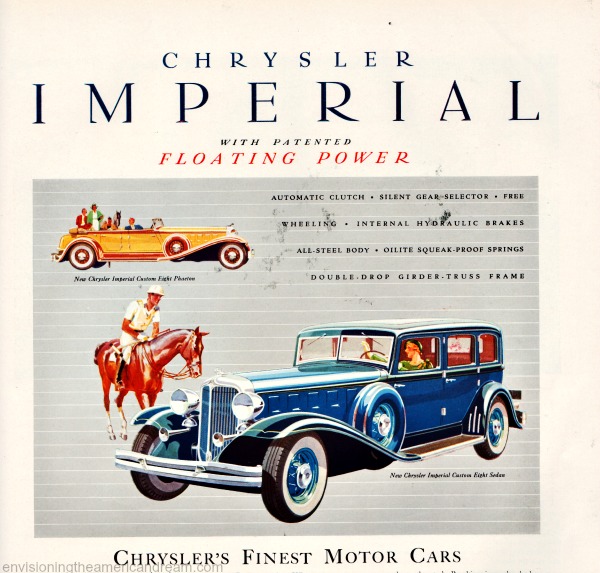
Vintage Chrysler Imperial advertisement 1930
For sheer luxury, the Chrysler Imperial Eights costing $ 3595 were ” everything the word “‘Imperial’ signifies…as the dictionary says ‘fit for an emperor; magnificent; imposing; superior in size or quality.'”
“Even if you have your own chauffeur, this ad for Chrysler Imperial informs us “you will want to do the driving>”
As rampant unemployment and poverty became more and more common, the wealthy lived in a world that remained insular, arrogant and out of touch. Sound familiar?
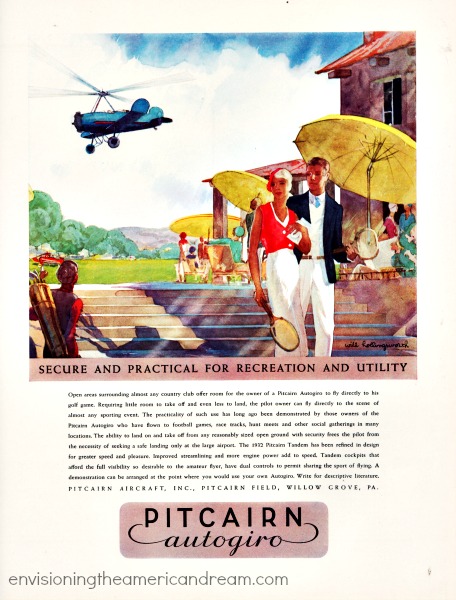
Perfect for the country club set was their own personal Pitcairn Autogiro, a precursor to the helicopter. This 1930 ad entices the reader : “Open areas surrounding almost any country club offer room for the owner of a Pitcairn Autogiro to fly directly to his golf game. The practicality of such use has long ago been demonstrated by those owners of the Pitcairn Autogiro who have flown to football games, race tracks, hunt meets and other social gatherings.”
Disconnect
The folks in these ads, these owners of fine country homes, town houses and yachts, seem oblivious to the crumbling economy around them. But then again so did their President.
In his December 2, 1930 message to Congress an overly optimistic President Herbert Hoover delusionally said “…that the fundamental strength of the economy is unimpaired.”
That December as the International apple shippers Association faced with a surplus of apples decided to sell them on credit to jobless men for resale at 5 cents each, the wealthy began packing their Louis Vuitton steamer trunks for their winter cruises.
Goodbye to All That
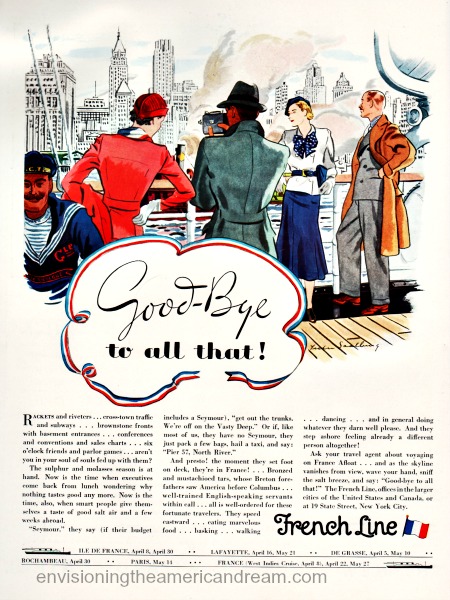
Vintage Ad French Line Cruise Ships 1930
Naturally every need would be taken care of: “Bronzed and mustachioed tars whose Breton forefathers saw America before Columbus..well trained English-speaking servants within call..all is well-ordered for these fortunate travelers.”
For those less sports inclined, a winter cruise was a brilliant escape from harsh winter.
“Say Goodbye to All That,” cheers on the headline in this 1930 as for French Line Cruises
A sumptuous liner with its spacious salons and charming staterooms where nothing is lacking, would take you far away from wretchedness and misery and all that!
“Rackets and riveters cross town traffic and subways brownstone fronts with basement entrances conferences and conventions aren’t you fed up with them all?” the reader of the ad is asked.
Brother Can You Spare a Dime?
Who needed to be reminded of desperate men in threadbare suits selling apples on the street corner, hoboes and Hoovervilles?
“Now is the time when executives come back from lunch wondering why nothing tastes good anymore. Now is the time also when smart people give themselves a taste of good salt air and few weeks abroad.”
Assuming the reader of this ad which appeared in Fortune magazine has a chauffeur the ad goes on to say:
“Seymour they say, ‘get out the trunks. We’re off on the vast deep’.. And presto! The moment they set foot on deck they’re in France!”
“Ask your travel agent about voyaging on France afloat..and as the skyline vanishes from view wave your hand sniff in the salt breeze and say Goodbye to all that!”
Little White Lies

President Hoovers first reaction to the slump which followed the crash in October 1929 had been to treat it as a psychological disorder. he had chosen the word “Depression” because it sounded less frightening than “panic or “crisis”.
The fact that more than 1,300 banks would close a great deal of people were indeed depressed.by the end of 1930 and unemployment rose sharply passing 4 million, meant a great deal of people were indeed “depressed.”
A secure job. a warm home, and food on the table; many during the depression had already said goodbye to all that!
For members of the well-heeled class everything was aces!
Especially if you listened to one of their own , Secretary of the Treasury Andrew W. Mellon the banker, businessman industrialist and member of the prestigious and wealthy Mellon family.
In the same year these ads ran, Mellon responded to the dire economic times commenting: ” I see nothing in the present situation that is either menacing or warrants pessimism. During the winter months there may be some slackness or unemployment, but hardly more than at this season each year.”
That dynamic duo of Wall Street and Washington was personified by Andrew Mellon.
Regarded in the roaring 20s as the greatest Secretary of the Treasury since Alexander Hamilton, only one year after the crash, he was mocked by middle class children chanting:
“Mellon pulled the whistle”
“Hoover rang the bell”
“Wall Street gave the signal”
“And the country went to hell”
Copyright (©) 2016 Sally Edelstein All Rights Reserved






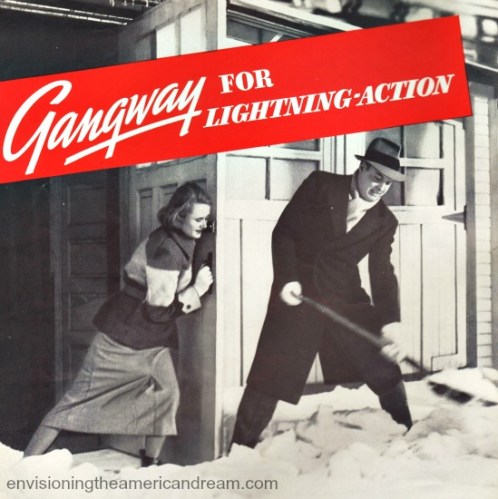
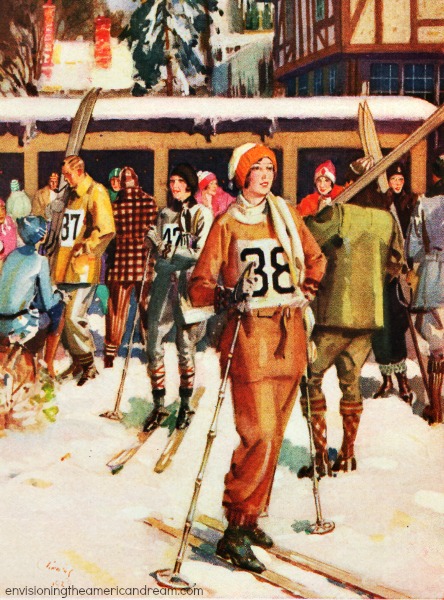




With their noses pointed so far upward they couldn’t see their own feet, its no wonder that the trials and tribulations of the country’s less fortunate were invisible to them. I’ve seen these ads before, in Pinterest, and it simply boggles the mind of the juxtaposition of some of a few them to the articles that surrounded them.
The only solace that the struggling masses got out of this existence on the rocky and jagged crevasse which separated the “haves” and the “have nots”, was to be observant of some of the “haves” losing their footing, their homes, servants, fine cars, jewels and other privileges of wealth to join the “have nots,” pinching every penny and “making Lincoln holler!” just like the rest of them. And noting that the more one had, the more one had to lose! Sometimes a taste of humility, in big doses, was the only thing that brought those noses down out of the sky.
An episode (at least one) of The Walton’s dealt with that very issue, when an allegedly well-to-do local family, with comparatively great wealth and privilege, living in a fine home nearby, struggled with the loss of the family fortune, and the eldest son’s inability to tell his widowed mother about their real circumstances. In order to try and keep the family together and living as close to the manner to which they had been accustomed, the son unwisely began hocking family treasures and valuables, without telling her it was being done or that it was even necessary. After John Walton completed a repair job on the refrigerator (a Depression era GE Monitor top electric model) the son, Stewart, paid him with money in a sealed envelope, as he had observed his own father doing in the past. Back then, it was considered bad form to count money in front of the person who had given it to you, as if you didn’t trust their honesty. John didn’t want to embarrass the young man by opening it in his presence, so he took the sealed envelope with him to open at home. Later, the family, recalling the former generosity of the now deceased father, anticipated a goodly sum with which they could accomplish several needed tasks. The envelope was opened, to reveal a single dollar bill, and the family was quite disappointed, but pointed to the troubles of everyone around them as the possible cause, or Stewart’s lack of knowledge of how things like this should have been handled, not realizing their true plight.
Some conversational faux pas which Stewart had been caught making, and some details about his appearance, including the run down condition of his shoes, had made the older Walton boys suspicious, especially Ben and Jason, when they had gone to the house expecting to sell magazine subscriptions to this “rich” family.
But when the Sheriff showed up at John and Olivia’s front door, with a panicked Stewart’s mother in tow, explaining that some valuable heirloom goblets had come up missing from their house immediately following his visit to make the repairs, and further his sighting in Charlottesville at a pawnbroker’s later the same day, pointed the finger of suspicion at John, and became a turning point in the story.
John refused to explain his movements or his reasons for being in Charlottesville at a pawnbroker’s that day, believing his decisions as a grown man were his own to keep private. His own stubbornness almost landed him in jail, until Stewart finally and belatedly stepped forward to reveal to his mother, who had returned on her own to the Walton’s front door to demand the return of her property, the circumstances behind their disappearance, and that of all the other items that had gone missing over time. Her realization that the family money was gone was almost enough to do her in, but she survived, and their family moved to less palatial quarters and his sister returned home from her private, exclusive girls’ boarding school to attend their local public school.
In the meantime, John finally revealed to Olivia his reason for having visited the pawnbroker’s shop that day he was spotted there. He had decided, to his regret, that the only way to replace the worn and overpatched tires on the truc5k he used for work, was to pawn his gold wedding band, which had been kept in the top middle compartment of his desk so it wouldn’t be damaged in the rough work in which he was involved. Olivia was of course disappointed, because, as she said, “John, I loved that ring. Do you think we can ever get it back?” He assures her that with good tires on the truck, they stood a pretty good chance of making up the money it would take. And since in later episodes, he is seen wearing it, we can only assume they did!
But the story makes several good points, including (but not exclusively) the fallacy of false pride, the conditions of many people during that period of international financial devastation, and that sometimes one must do painful things for a greater good, especially in the case of John’s wedding ring pawning for the practical purchase of tires for work.
LikeLiked by 1 person